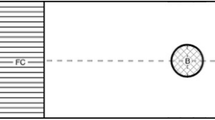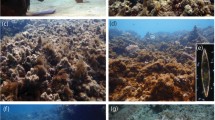Abstract
Although the abilities of prey to detect and respond to chemical substances associated with a predator have been widely reported, the factors promoting the evolution of responses to prey alarm cues vs. predator odours are still vague. In this article, we combined field research with laboratory experiments to explore which chemical substance associated with predator activity (predator odour, conspecific or heterospecific alarm substances) induces defence responses in the aquatic oligochaete Stylaria lacustris, which is vulnerable to common littoral predators. The field results indicated that predators injure the oligochaetes and a great proportion, up to 45% of individuals in the population, were found to be damaged. The results of the laboratory experiments revealed that chemical odours from damselfly larvae feeding on S. lacustris did not induce the defence response in the oligochaetes. On the contrary, oligochaetes detected and responded to alarm substances from damaged conspecifics alone and substances from damaged cladoceran Daphnia magna. We discussed conditions favouring the responses to damage released prey alarm cues instead of predator odours in Stylaria lacustris. Our data suggest that the selection of responses to alarm cues from damaged prey vs. predator odours may be dependent on three factors: (1) non-species-specific predation, (2) divergence of food niche of the different stages of the predator and (3) complex food web with multiple predators.

Similar content being viewed by others
References
Brock, T. C. M., R. M. M. Roijackers, R. Rollon, F. Bransen & L. Van der Heyden, 1995. Effects of nutrient loading and insecticide application on the ecology of Elodea-dominated freshwater microcosmos. II Responses of macrophytes, periphyton and macroinvertebrate grazers. Archiv für Hydrobiologie 134: 53–74.
Bruin, J., M. W. Sabelis & M. Dicke, 1995. Do plants tap SOS signals from their infested neighbours? Trends in Ecology and Evolution 10: 167–170.
Chivers, D. P., R. S. Mirza & J. G. Johnston, 2002. Learned recognition of heterospecific alarm cues enhances survival during encounters with predators. Behaviour 139: 929–938.
Chivers, D. P. & R. J. F. Smith, 1998. Chemical alarm signalling in aquatic predator-prey systems: a review and prospectus. Ecoscience 5: 338–352.
Cohen, D., 1971. Maximizing final yield when growth is limited by time or by limiting resources. Journal of Theoretical Biology 33: 299–307.
Cuppen, J. G. M., S. J. H. Crum, H. H. Van Den Heuvel, R. A. Smidt & P. J. Van Den Brink, 2002. Effects of a mixture of two insecticides in freshwater microcosms: I. Fate of chlorpyrifos and lindane and responses of microinvertebrates. Ecotoxicology 11: 165–180.
Davies, R. W., F. J. Wrona, L. Linton & J. Wilkialis, 1981. Inter- and intra-specific analyses of the food niches of two sympatric species of Erpobdellidae (Hirudinoidea) in Alberta, Canada. Oikos 37: 105–111.
Dawidowicz, P. & C. J. Loose, 1992. Metabolic costs during predator-induced diel vertical migration of Daphnia. Limnology and Oceanography 37: 1589–1595.
Dixon, S. M. & R. L. Baker, 1988. Effects of size on predation risk, behavioural response to fish, and cost of reduced feeding in larval Ischnura verticalis (Coenagrionidae: Odonata). Oecologia 76: 200–205.
Gadgill, M. & W. H. Bossert, 1970. Life historical consequences of natural selection. American Naturalist 104: 1–24.
Golub, J. L. & G. E. Brown, 2003. Are all signals the same? Ontogenetic change in the response to conspecific and heterospecific chemical alarm signals by juvenile green sunfish (Lepomis cyanellus). Behavioural Ecology and Sociobiology 54: 113–118.
Holopainen, J. K., 2004. Multiple functions of inducible plant volaties. Trends in Plant Science 9: 529–533.
Johnson, D. M., C. L. Pierce, T. H. Martin, C. N. Watson, R. E. Bohanan & P. H. Crowley, 1987. Prey depletion by odonate larvae: combining evidence from multiple field experiments. Ecology 68: 1459–1465.
Kaliszewicz, A., 2003. Sublethal predation on Stylaria lacustris: a study of regenerative capabilities. Hydrobiologia 501: 83–92.
Kaliszewicz, A., K. Johst, V. Grimm & J. Uchmański, 2005. Predation effect on the evolution of life-history traits in a clonal oligochaete. American Naturalist 166: 409–417.
Kats, L. B. & L. M. Dill, 1998. The scent of death: chemosensory assessment of predation risk by prey animals. Ecoscience 5: 361–394.
Koperski, P., 1998. Feeding in epiphytic, carnivorous insects: resource partitioning and the avoidance of intraguild predation. Archiv für Hydrobiologie 142: 467–483.
Korn, M. & D. Straile, 2004. The influence of stickleback predation on macrophyte associated invertebrates. XXIX Congress SIL Lahti, Finland.
Laforsch, C., L. Beccara & R. Tollrian, 2006. Inducible defenses: the relevance of chemical alarm cues in Daphnia. Limnology and Oceanography 51: 1466–1472.
Lauridsen, T. L. & I. Buenk, 1996. Diel changes in the horizontal distribution of zooplankton in the littoral zone of two shallow eutrophic lakes. Archiv für Hydrobiologie 137: 161–176.
Li, D. & W. S. Lee, 2004. Predator-induced plasticity in web-building behaviour. Animal Behaviour 67: 309–318.
Lima, S. L. & L. M. Dill, 1990. Behavioral decisions made under the risk of predation: a review and prospectus. Canadian Journal of Zoology 68: 619–640.
Löhlein, B., 1996. Seasonal dynamics of aufwuchs Naididae (Oligochaeta) on Phragmites australis in a eutrophic lake. Hydrobiologia 334: 115–123.
Mathis, A. & R. J. F. Smith, 1993. Intraspecific and cross-superorder responses to chemical alarm signals by brook stickleback. Ecology 74: 2395–2404.
McCarthy, T. M. & W. A. Fisher, 2000. Multiple predator-avoidance behaviours of the freshwater snail Physella heterostropha pomila: responses vary with risk. Freshwater Biology 44: 387–397.
Pennak, R. W., 1978. Fresh-water invertebrates of the United States. A Wiley-Interscience Publication, New York.
Reynoldson, T. B. & R. W. Davies, 1970. Food niche and coexistence in lake-dwelling triclads. Journal Animal Ecology 39: 599–617.
Reznick, D. N. & J. A. Endler, 1982. The impact of predation on life history evolution in Trinidadian guppies (Poecilia reticulata). Evolution 36: 160–177.
Sakwińska, O., 2002. Response to fish kairomone in Daphnia galeata life history traits relies on shift to earlier instar at maturation. Oecologia 131: 409–417.
Schoepner, N. M. & R. A. Relyea, 2005. Damage, digestion, and defence: the roles of alarm cues and kairomones for inducing prey defences. Ecology Letters 8: 505–512.
Ślusarczyk, M., 1999. Predator-induced diapause in Daphnia magna may require two chemical cues. Oecologia 119: 159–165.
Smith, R. J. F., 1999. What good is smelly staffing the skin? Cross function and cross taxa effects in fish “alarm substances”. In Johnston, R. E., D. Muller-Schwarze & P. W. Sorensen (eds.), Advances in Chemical Signals in Vertebrates. Kluwer/Plenum, New York: 475–487.
Soszka, G. J., 1975. The invertebrates on submerged macrophytes in three masurian lakes. Ekologia Polska 23: 371–391.
Thompson, D. J., 1978. The natural prey of larvae of the damselfly. Ischnura elegans (Odonata: Zygoptera). Freshwater Biology 8: 377–384.
Thorp, J. H. & A. P. Covich, 1991. Ecology and classification of North American freshwater invertebrates. Academic Press Inc., San Diego.
Tollrian, R. & C. D. Harvell, 1999. The Ecology and Evolution of Inducible Defences. Princeton University Press, Princeton.
Tollrian, R. & E. von Elert, 1994. Enrichment and purification of Chaoborus kairomone from water: further steps toward its chemical characterization. Limnology and Oceanography 39: 788–796.
Vanoverbeke, J. & L. De Meester, 1997. Among-population genetic differentiation in the cyclical parthenogen Daphnia magna (Crustacea, Anomopoda) and its relation to geographic distance and clonal diversity. Hydrobiologia 360: 135–142.
Walls, M. & M. Ketola, 1989. Effects of predator-induced spines on individual fitness in Daphnia pulex. Limnology and Oceanography 34: 390–396.
Wetzel, R. G., 1983. Limnology. Saunders, Philadelphia.
Wisenden, B. D., D. P. Chivers & R. J. F. Smith, 1997. Learned recognition of predation risk by Enallagma damselfly larvae (Odonata, Zygoptera) on the basis of chemical cues. Journal of Chemical Ecology 23: 137–151.
Young, J. O., 1981. A comparative study of the food niches of lake-dwelling triclads and Leeches. Hydrobiologia 84: 91–102.
Acknowledgements
This research was funded by a State Committee for Scientific Research Doctoral Dissertation Grant 3P04F06425. The experiments included in our research comply with the current laws of Poland.
Author information
Authors and Affiliations
Corresponding author
Additional information
Handling editor: S. Declerk
Rights and permissions
About this article
Cite this article
Kaliszewicz, A., Uchmański, J. Damage released prey alarm substances or predator odours? Risk assessment by an aquatic oligochaete. Hydrobiologia 618, 57–64 (2009). https://doi.org/10.1007/s10750-008-9547-1
Received:
Revised:
Accepted:
Published:
Issue Date:
DOI: https://doi.org/10.1007/s10750-008-9547-1




